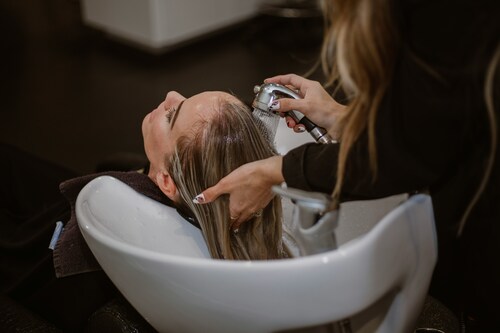Hair loss can significantly affect an individual’s confidence and self-esteem. While many products and treatments claim to combat loss, not all are effective for everyone. A transplant can be a more permanent solution, but determining the right time to consult a specialist is crucial, as early intervention can lead to a more successful outcome.
Here are the top signs that indicate it’s time to see a hair doctor transplant.
Noticeable Thinning on Top of Your Head
One of the most common and initial signs of hair loss is thinning on the top of your head. This area, known as the crown, tends to lose density before other parts. If your scalp is more visible, especially in bright light or photos, it could be time to consult with a transplant specialist.
Receding Hairline
A receding hairline is another clear sign of loss. This typically starts with a noticeable regression at the temples. For men, this can begin with a pattern that resembles the letter ‘M’ forming at the hairline. Women might notice a broader thinning across the whole front line of the hair. If your forehead appears to be getting more extensive due to a receding hairline, a transplant might be the right step.
Increased Hair Shedding
While it’s expected to shed 50-100 hairs a day, significantly more than this can be a concern. If you’re finding clumps of tresses in your shower drain, pillow, or brush, it could indicate that you’re experiencing more than typical shedding. A specialist can assess your loss pattern and density to determine if a transplant can help restore your hair.
You Can See the Scalp
When the density of tresses decreases, the scalp becomes more visible. This is especially noticeable under strong light or when tresses are wet. If the scalp is becoming increasingly visible through sparse follicles, this is a significant indicator that follicles might not be as active as they used to be.
Genetic Hair Loss in Your Family
If you have a family history of baldness or thinning, particularly on one side of your family, you are at a higher risk of experiencing similar issues. Observing the patterns of loss in your family can help you predict your loss trajectory and determine when to seek a specialist’s help.
Age-Related Thinning
As people age, their hair naturally begins to thin. However, excessive thinning that leads to large patches of baldness is not just a typical sign of aging. If you’re experiencing accelerated loss as you age, a transplant might help you regain fuller tresses.
Loss After Pregnancy or Menopause
Due to hormonal changes, women may experience temporary thinning of tresses after pregnancy or during menopause. If this loss persists or creates significant bald patches, it could be time to see a specialist. A transplant can help restore the density and volume of tresses.
Failure of Other Treatments
If you’ve tried various treatments, like minoxidil (Rogaine), finasteride (Propecia), or laser therapy, and haven’t seen satisfactory results, consider a transplant. These treatments can slow down or reduce hair loss for some individuals, but if they haven’t worked for you, a transplant could be the next step.
Hair Loss Is Affecting Your Confidence
Beyond the physical signs, the psychological impact of follicle loss is significant. If you find yourself less confident, avoiding social situations, or changing how you style your tresses to hide thinning or bald spots, it’s essential to consider a transplant. Restoring your tresses can significantly improve your self-esteem and quality of life.
Consulting a hair doctor for a transplant is an important decision. If you’re experiencing any of the signs above, a specialist can provide a detailed evaluation and discuss your options. Transplants have advanced significantly, offering natural-looking and lasting results.



